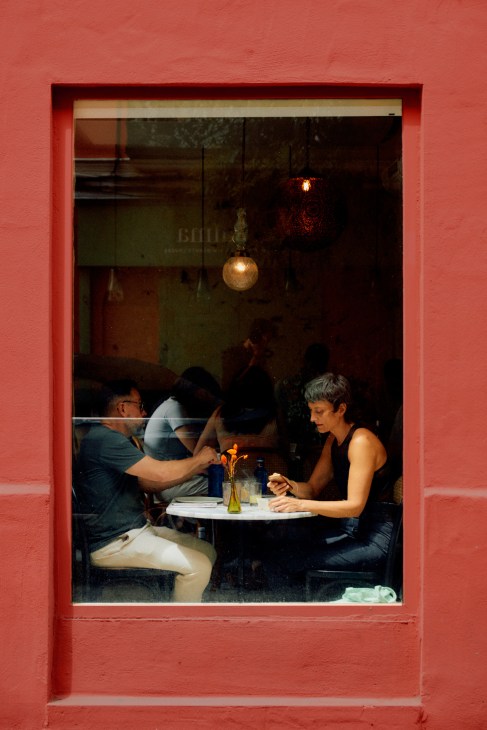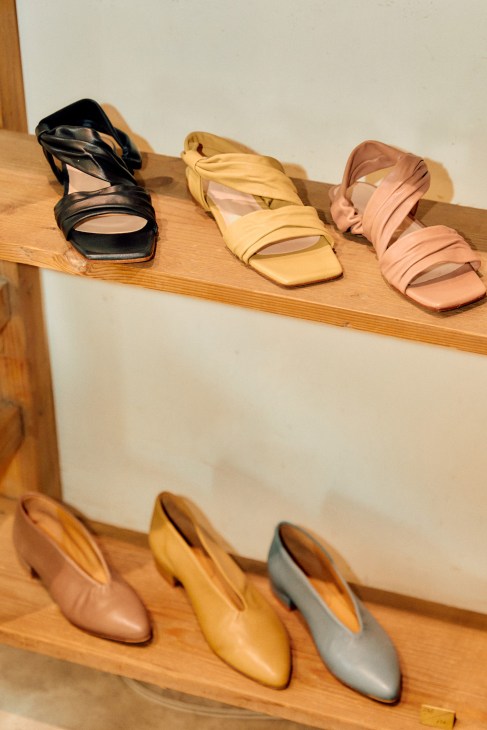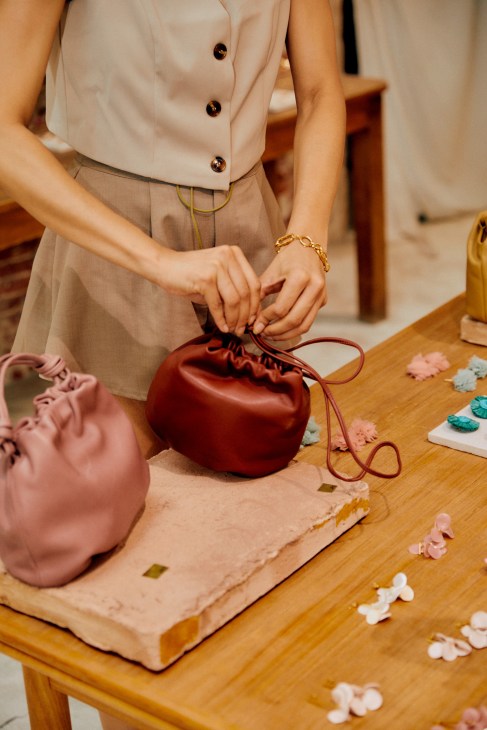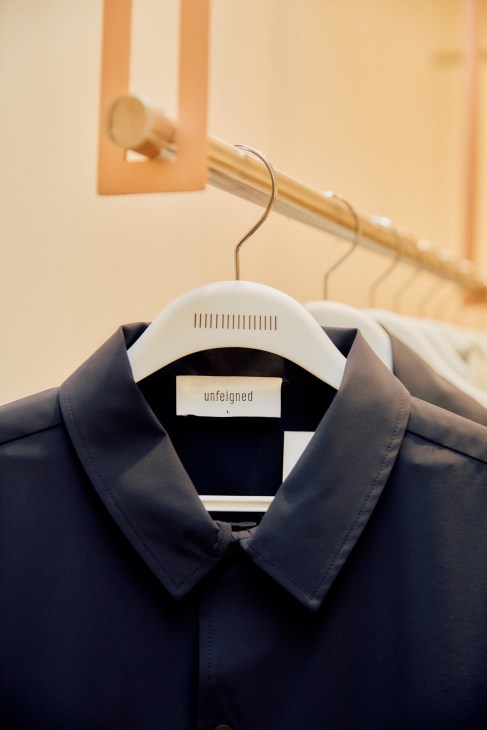Madrid’s fashion scene is booming, and Salesas is leading the charge
The Salesas neighbourhood in downtown Madrid has transformed into a new mecca for Spanish fashion.

Madrid is Spain’s most important business city but those who have spent time in the Spanish capital also know it for its hospitality, thriving art scene and flair for late-night revelry. There’s never been a shortage of people travelling to the city to visit its museums, urban parks and tabernas. But Madrid has also been building a reputation for fashion – stealing some of the thunder from Barcelona. The Gran Vía has never been busier and department stores here now offer some of the sharpest luxury-fashion curations available in Europe. And its neighbourhoods are becoming fashion hubs as local designers and the city’s growing population of expats open concept shops and brand flagships, touching on every aspect of the market, from leather accessories to womenswear and sportswear.


Salesas, sandwiched between lively Chueca and Salamanca in downtown Madrid, is one of these neighbourhoods. Over the past five years the area, with its tree-lined squares and 19th-century buildings, has turned into a magnet for the city’s creatives and transformed into one of its most elegant retail addresses.
“Salesas is an oasis,” says Maria Gómez Ruiz, the art director and co-founder of Spanish menswear brand Unfeigned, who picked Salesas as the home of her business’s office and first flagship shop. Since its opening in 2022, Unfeigned has become a central part of the community, which also includes Madrid-based accessories labels Malababa and Zubi, multi-brand boutiques Pez and Ekseption, and menswear specialist Blaw.
There’s a real sense of camaraderie among residents. Gómez often directs friends to Pez, praising its edit of Spanish labels including Masscob and Cordera; she makes regular stops at La Oficial to buy ceramics for her home and finishes off long workdays at Gota wine bar or Los 33, a favourite, that blends traditional Spanish and Latin American recipes.


In many ways the rapid transformation of Salesas reflects the growth wave that has been sweeping through Madrid – largely a result of increased Latin American investment and migration. The welcoming policies for foreign property investors (the Spanish government grants residence permits to those purchasing property above €500,000), shared language, cultural ties and political turmoil in Venezuela have all drawn wealthy South American elites to Madrid, so much so that by early 2022, 58 per cent of the city’s foreign-born residents were said to come from Latin America.
Salesas has become the destination of choice for the wealthier members of this crowd of new madrileños. No matter when you go, you’re likely to find elegant women and men going for strolls, carrier bags in hand, stopping to sip cañas in the late afternoon sun. “The clientele here appreciate quality but aren’t into mainstream products,” says Gómez. “They’ll spend €700 but they don’t want the logo or the big brand name.”
It’s this understated charm that also appeals to international fashion labels, which are coming to Madrid to open flagship shops and are keen to take advantage of the momentum in the Spanish capital. “Everything is changing extremely fast, which is good for us,” Gómez says, sitting in Unfeigned’s office, surrounded by rows of shirts and sporty trousers. “When we moved to the area, we didn’t know that Aesop or apc would be opening here too.” The boutiques from established brands have brought prestige to the area and increased footfall. Veja, Sessùn, Stüssy and Taschen have also opened shops here.


It’s not just established labels that are cropping up. “A lot of [independent] Spanish brands, which used to only be available online, are opening really nice flagships here,” adds Gómez. Lamarca Well, a sportswear brand, is one of them. The shop is part of a network of wellness- orientated businesses and includes a gym, a healthy restaurant and bakery.
“This is one of the only gyms by [US entrepreneur] Tracy Anderson outside America,” says Gómez, explaining that the wave of expats moving to Madrid is also influencing culture, particularly when it comes to fashion and lifestyle. “I have never seen so many people joining running clubs.” Gómez and her brother, Rafa, both avid runners, believe the worlds of wellness and fashion feed into each other. “When people start to care about how they look, they become invested in how they dress as well,” says Rafa.


Both Gómez siblings welcome the shifting dynamics and the increased international flavour in their hometown – even though a lot of the new ventures in Salesas feel more American than Castilian. “The success of the area is driven by the fact that people are moving here, buying and starting brands,” adds Gómez. “The La Marca building is owned by a Venezuelan family. There’s a really popular Mexican-owned salad bar chain here and my Argentinian friends founded the best speciality coffee shop in Madrid, Osom.”


This new blend of cultures is what makes the neighbourhood so appealing. Salesas is the kind of place where old and new can co-exist. Here, tabernas, centuries-old tapas restaurants and artisanal shops such as the Cesteria Sagon (dating back to the 1950s and offering beautiful handwoven baskets) sit alongside contemporary fashion boutiques, galleries and upscale wine bars, where resident DJs spin records late into the night. “You can have a nice tortilla sandwich with your coffee, and then have a Michelin-starred meal,” says Gómez, who also lives nearby. “To me, that’s the essence of life here.”

This convergence of tradition and innovation is also reflected in the designs that you’ll find across Salesas’s shop floors. Unfeigned, for one, offers sustainably made, no-frills clothing crafted in technical, often waterproof fabrics, yet rooted in traditional tailoring principles. “My brother, Rafa, has always been obsessed with making the perfect T-shirt,” says Gómez. “This is why we went all around the world to different factories and bought different shirts from Japan to San Francisco.” As the brand continues to grow, the two continue to make trips abroad and bring the knowledge they acquire back home to Salesas.
Pez, a bohemian concept shop across the road, features a potpourri of Spanish and international brands, from pieces by Dutch labels such as Humanoid and Les Coyotes de Paris to jewellery by Madrid-based designer Beatriz Palacios. The shop, which operates out of an old carpet factory, is equal parts elegant and rustic, the kind of place where you might find easy dresses hanging next to more structured pieces, such as a tailored jacket by the New York brand Sibel Saral. Pez was founded by Patricia de Salas and Beatriz Mezquiriz, who came to Salesas before its rise. The rapid transformation has been mostly positive for her business but de Salas also recognises that there have been some drawbacks – higher rents can make it more difficult for smaller businesses to stay in the neighbourhood. A balance will need to be found.
Still, the positives more than outweigh the negatives for most of Salesas’ local designers and retailers, who have been enjoying the exposure to a more global audience. At Malababa, which specialises in handcrafted, leather accessories, shop assistant Carolain Spencer shows monocle a pair of earrings from the window display: they are made from a delicate brass material, with a swirl of pink petals dangling loosely from the bottom. “These have become huge in South Korea,” she says, holding them up on the palm of her hand. “So many customers come here looking for this exact model.”
It used to be that Barcelona was touted as Spain’s most international city but that role has become less sure. This is, of course, mostly due to immigration but it is also a product of better infrastructure. Rafa Gómez cites the recent renovation of the Santiago Bernabéu Stadium as an example of the many ways in which the Spanish capital is improving. “People used to have to go to Barcelona to see the international pop stars,” he says. “Now Madrid can do that as well.”
Some entrepreneurs see the rivalry between the two cities as productive. “Competition is good,” says Xavi Burgell, co-founder of Blaw Store, a menswear shop that first opened in Barcelona and is best known for its beachy, laid-back designs. When deciding on a Madrid location, Burgell and his wife and business partner, Anna Vintro, were drawn to Salesas because of its restaurants and mix of independent brands. “I love food,” says Burgell. Now, it’s Madrid’s culture that they are most intrigued by. “The clientele are cosmopolitan people and we see a lot of actors and artists here,” he adds. Galleries with a presence in the area, such as Échale Guindas, Orellana-5 and Villazan, likely have something to do with that.
Our tour of the neighbourhood ends with a loop around the Convent of the Salesas Reales, home to Spain’s supreme court. As the working day comes to an end, the streets start to become busier. Older men sit on plastic chairs in front of newsstands playing cards; women dressed in crisp shirts and golden jewellery stand outside the Teatro Infanta Isabel picking at swirls of frozen yoghurt; smooth-faced millennials order gin cocktails at MaceM bar. These small scenes are the best part of living and working in Salesas. “The people on these streets are always fashionable or they work in art,” says Gómez. “I never need to go to another part of Madrid to see something interesting happening because here you find inspiration every day.”
Salesas address book
For wardrobe classics:
Unfeigned
Calle de Fernando VI, 17, Centro
Best curation:
Pez
Calle de Regueros, 15, Centro
Menswear specialist:
Blaw Store
Calle del Barquillo 36, Centro
Morning pastries:
La Duquesita
Calle de Fernando VI, 2, Centro
To refuel:
Gota wine bar
Calle de Prim, 5, Centro
Taste of Salesas:
Los 33
Plaza de las Salesas, 9, Centro
Artisan design:
Cestería Sagon
Calle de Fernando VI, 7, Centro
Gallery visit:
Orellana-5
Calle de Orellana, 5, Centro


